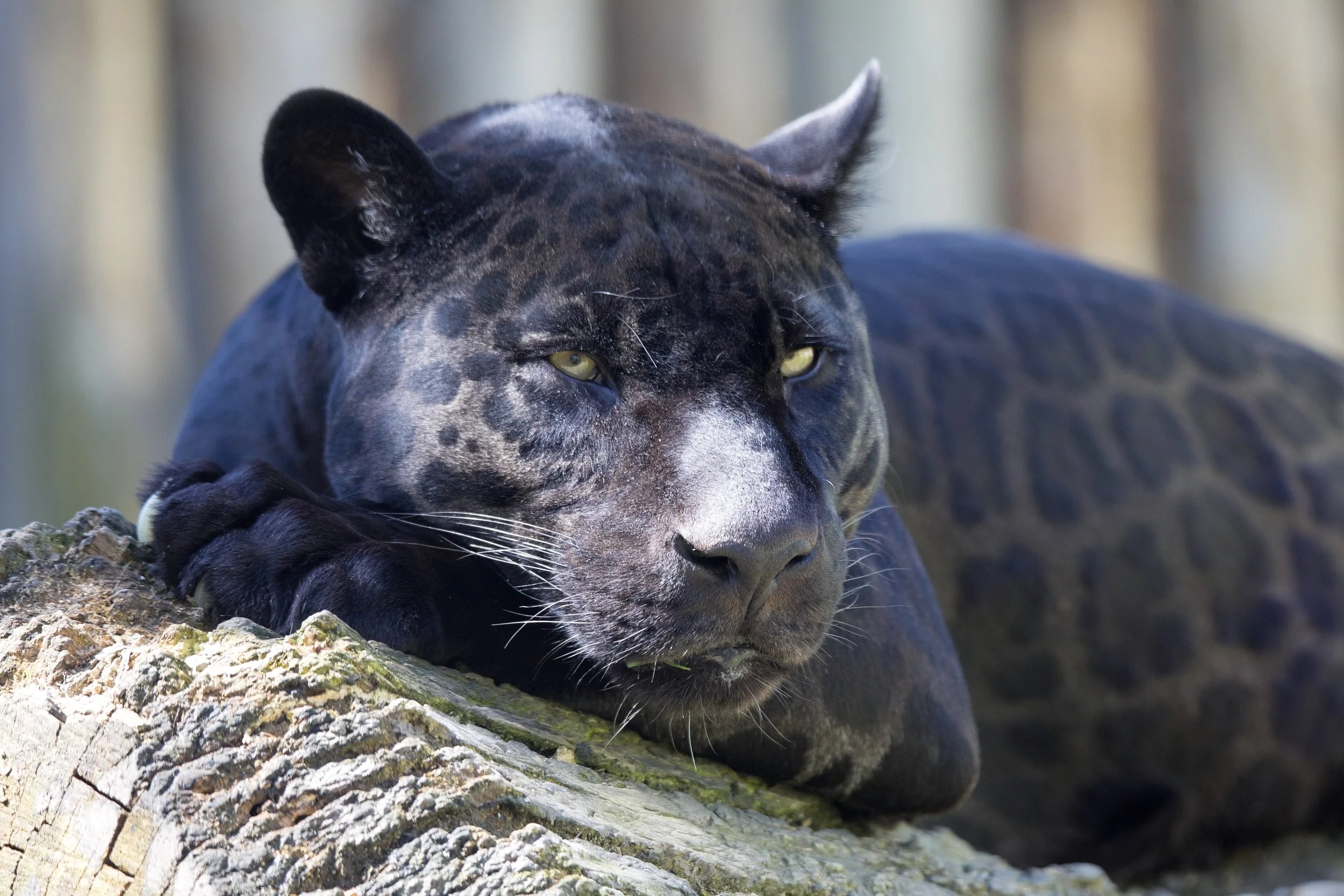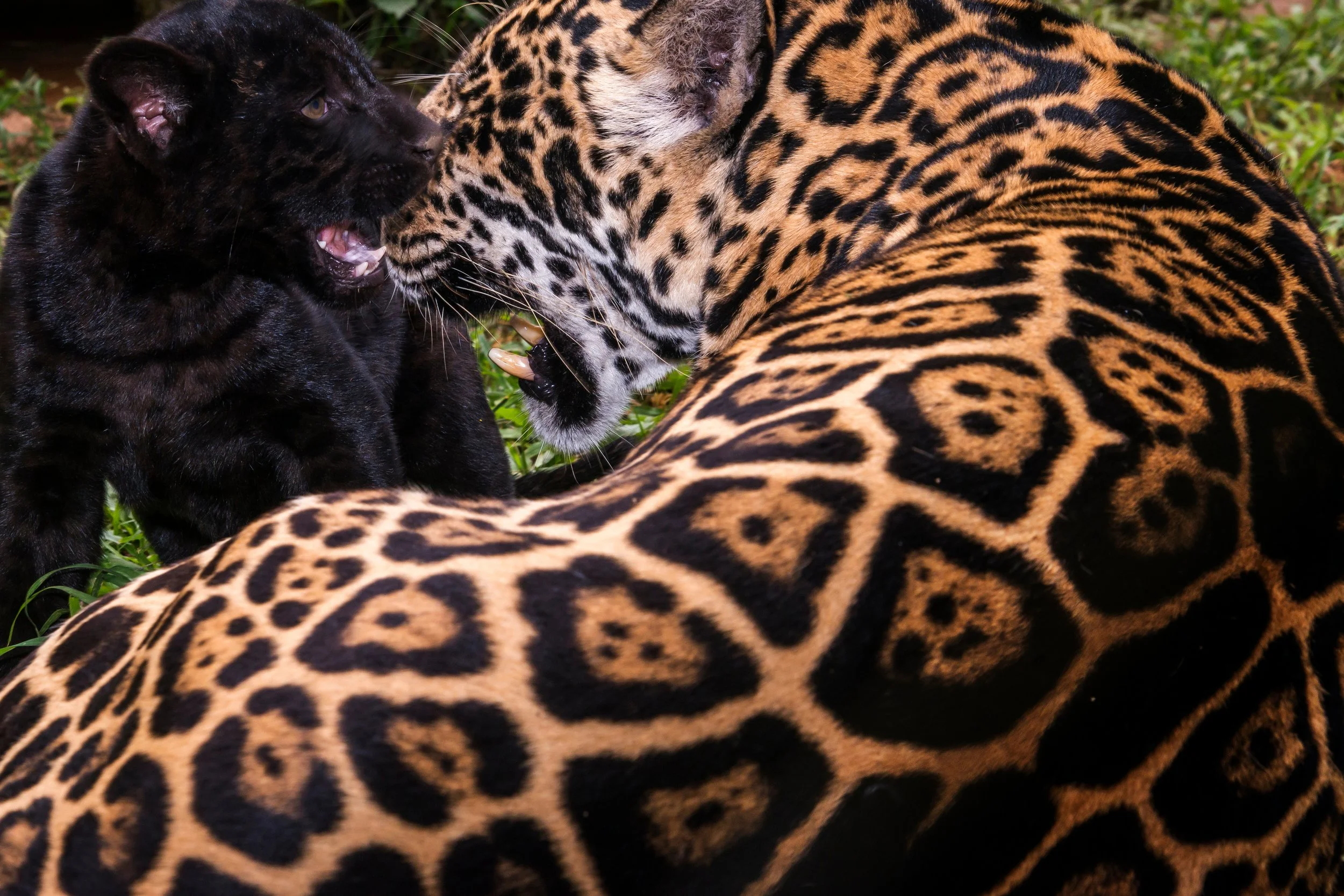Safari Journal - November 2025
JAGUAR
Melanistic jaguars
- Wikipedia
Melanistic jaguars are also known as black panthers. The black morph is less common than the spotted one. Black jaguars have been documented in Central and South America. Melanism in the jaguar is caused by deletions in the melanocortin 1 receptor gene and inherited through a dominant allele. Black jaguars occur at higher densities in tropical rainforest and are more active during the daytime. This suggests that melanism provides camouflage in dense vegetation with high illumination.
In 2004, a camera trap in the Sierra Madre Occidental mountains photographed the first documented black jaguar in Northern Mexico. Black jaguars were also photographed in Costa Rica's Alberto Manuel Brenes Biological Reserve, in the mountains of the Cordillera de Talamanca, in Barbilla National Park and in eastern Panama.
The word "jaguar" is possibly derived from the Tupi-Guarani word yaguara meaning 'wild beast that overcomes its prey at a bound'. Because that word also applies to other animals, indigenous peoples in Guyana call it jaguareté, with the added sufix eté, meaning "true beast".[
Belize
“If that ocelot or puma in Cockscomb Basin Sanctuary purrs, it’s not necessarily friendly. It may be emotionally sizing you up as a possible adversary. (If it roars, it’s a jaguar.)”
Jaguars roam free inland in their own COCKSCOMB BASIN JAGUAR SANCTUARY, first and only reserve specifically set aside for these magnificent endangered spotted cats. Protected with them are keel-billed toucans, the impressive national birds, black orchids, the national flower, and the curious national animal, semi-aquatic Baird’s tapirs, related to rhinoceros but resembling short-trunked elephants.
Conservation
The jaguar is listed on CITES Appendix I, which means that all international commercial trade in jaguars or their body parts is prohibited. Hunting jaguars is prohibited in Argentina, Brazil, Colombia, French Guiana, Honduras, Nicaragua, Panama, Paraguay, Suriname, the United States, and Venezuela. Hunting jaguars is restricted in Guatemala and Peru. In Ecuador, hunting jaguars is prohibited, and it is classified as threatened with extinction. In Guyana, it is protected as an endangered species, and hunting it is illegal.
Earth League International Hunts the Hunters
A conservation N.G.O. infiltrates wildlife-trafficking rings to bring them down.
By Tad Friend / NewYorker Magazine
The Korean barbecue joint near L.A. wasn’t a crime scene, exactly. But on a muggy fall afternoon two of Mexico’s top wildlife traffickers sat in the back, eating lunch and talking shop. One of their most profitable lines of business is smuggling the buoyancy bladders of an endangered fish called the totoaba. The scab-colored bladders are remarkably yucky-looking, and the effort to harvest them from the Sea of Cortez has driven the vaquita porpoise to the verge of extinction. But they taste great in soup and make your skin glow! Or so the folk wisdom has it.
They’ve become costly enough in China—as much as fifty thousand dollars a kilogram—that they are often bestowed as gifts or bribes or simply cherished as collectibles, like Fabergé eggs.
The traffickers, Harry and Tommy, were Chinese. Harry, tall and pudgy, stayed bent over his chopsticks, while Tommy often stood to pace and talk on his phone. Both men believed that their host, Billy, a friend of several years, was a Hong Kong businessman who wanted to use their smuggling route. In fact, Billy, who was recording their conversation on his iPhone, was an operative for an N.G.O. called Earth League International.
ELI’s annual budget is just three hundred and fifty thousand dollars, but its operations have led to the arrest of an alleged jaguar-fang ring in Bolivia; helped the Mexican government pursue the Cartel of the Sea, a network in Baja California that trafficked sea cucumbers and totoaba; and sparked at least seven ongoing investigations by the Fish and Wildlife Service, the Department of Homeland Security, and the F.B.I. These agencies now treat ELI as trusted colleagues. Chris Egner, the Homeland Security agent who works most closely with Crosta’s team, told me, “Our partnership with ELI is invaluable. Their access to these particular criminal networks is simply something we can’t do.”
Why Do Leopards SKYDIVE? Incredible Big Cat Hunting Techniques
by NATURE on PBS
5 Conservation Heroes Saving Animals
On National Heroes Day, we celebrate people who inspire us through acts of kindness, courage, and selflessness. Though we often think of heroes as people who defend other people, it’s essential to honor those who protect the animal species, too. They cannot protect themselves from habitat loss, poaching, climate change, and other human-made threats, but thankfully, there are human heroes dedicated to doing just that. That’s why, this National Heroes Day, we’re celebrating five conservation heroes around the world, and the animals — big and small, famous and unrecognized — that they’ve saved.
Protect First, Post Later
Just snapped an award-winning photo of a wild cat? Awesome! We’re very jealous. Now, before you share with your followers, help us protect these felines from poachers by following a few social media best practices.
There is much about Jaguars in the Worldwide Safari Guide Site. Take a look at more information about this interesting animal.
Archived Issues
Advertisements
If you found these articles interesting, check back for another edition in this series. Please "like" our social media pages to be notified.
Advertisements
Tusk's approach to conservation recognizes that the long term future for wildlife and Africa's other natural resources is dependent on sustainable rural development. more... Tusk believes that if conservation is to succeed and environmental degradation to be reversed then education needs to be promoted at an early age.







